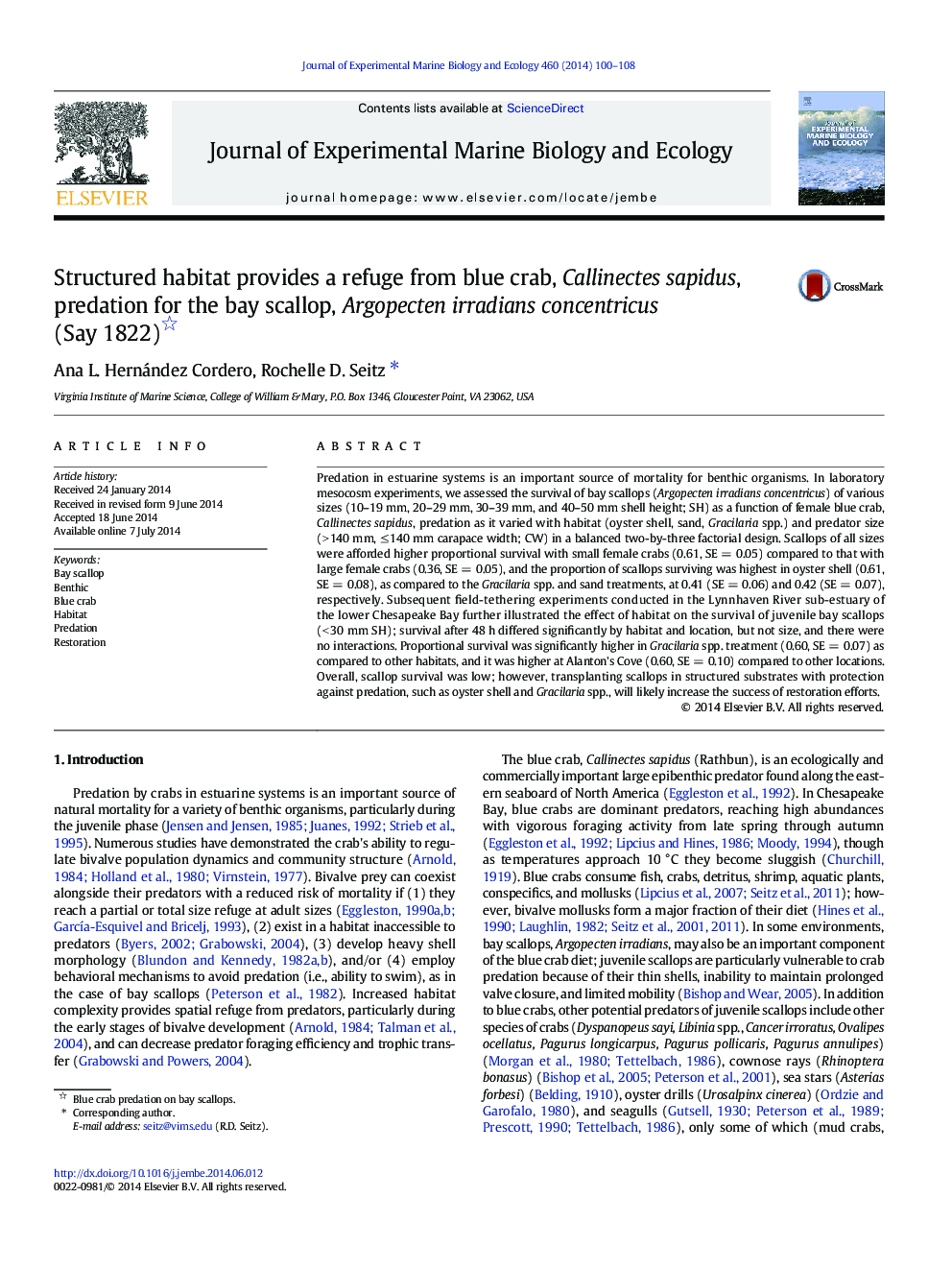| Article ID | Journal | Published Year | Pages | File Type |
|---|---|---|---|---|
| 6304065 | Journal of Experimental Marine Biology and Ecology | 2014 | 9 Pages |
â¢We assessed the survival of bay scallops as a function of blue crab predation.â¢Scallops of all sizes had higher proportional survival with small vs. large crabs.â¢In mesocosms, survival was highest in oyster shell compared to small algal patches.â¢Field-tethered scallop survival was highest in large Gracilaria spp. patches.â¢Scallop restoration could be improved by transplanting into structured habitats.
Predation in estuarine systems is an important source of mortality for benthic organisms. In laboratory mesocosm experiments, we assessed the survival of bay scallops (Argopecten irradians concentricus) of various sizes (10-19 mm, 20-29 mm, 30-39 mm, and 40-50 mm shell height; SH) as a function of female blue crab, Callinectes sapidus, predation as it varied with habitat (oyster shell, sand, Gracilaria spp.) and predator size (> 140 mm, â¤Â 140 mm carapace width; CW) in a balanced two-by-three factorial design. Scallops of all sizes were afforded higher proportional survival with small female crabs (0.61, SE = 0.05) compared to that with large female crabs (0.36, SE = 0.05), and the proportion of scallops surviving was highest in oyster shell (0.61, SE = 0.08), as compared to the Gracilaria spp. and sand treatments, at 0.41 (SE = 0.06) and 0.42 (SE = 0.07), respectively. Subsequent field-tethering experiments conducted in the Lynnhaven River sub-estuary of the lower Chesapeake Bay further illustrated the effect of habitat on the survival of juvenile bay scallops (< 30 mm SH); survival after 48 h differed significantly by habitat and location, but not size, and there were no interactions. Proportional survival was significantly higher in Gracilaria spp. treatment (0.60, SE = 0.07) as compared to other habitats, and it was higher at Alanton's Cove (0.60, SE = 0.10) compared to other locations. Overall, scallop survival was low; however, transplanting scallops in structured substrates with protection against predation, such as oyster shell and Gracilaria spp., will likely increase the success of restoration efforts.
